Introduction
Deployed U.S. military combatants carry out some of the most grueling and dangerous forward reconnaissance missions. In recent years, these troops have grown to rely heavily on battery-powered portable devices to fulfill operational needs, including operational energy, which is the essential energy required to move and sustain systems for military operations. Mission requirements have seen a significant upturn in operational energy needs with the use of modern tools such as handheld electronics, smartphones and personal computers. These and other portable electric devices play an increasingly important role in the lives of both the military and civilian populations they protect and support.
Given the growing importance of battery life, the ability to charge the battery is critical in maintaining the device’s operational effectiveness and the success of the intended missions. Losing power when using these tools in remote locations is not only an inconvenience, but also an absolute safety issue, one that may compromise the mission and the life of the combatant. Further, the weight of extra energy storage can present many challenges, such as limiting the ability to carry additional important equipment, munitions and survival gear. The delivery of additional supplies for extended missions further adds to the complexity of the operation.
Energy Opportunity
Military personnel are dependent on energy storage (i.e., batteries) to increase their operational effectiveness. This dependence presents many risks if the stored energy depletes or charging locations are not available. Forward-stationed troops carry large amounts of energy storage for extended missions, which can consist of up to 20 percent of the overall carry weight [1]. A typical Marine carries approximately 100 pounds of gear (see Figure 1) [2]. With batteries accounting for roughly 20 pounds of that weight, an alternative solution that can displace this extra weight and fulfill energy requirements is essential. Furthermore, any alternative must provide the ability to generate power on-site, extending power capabilities in the event that a mission is extended.
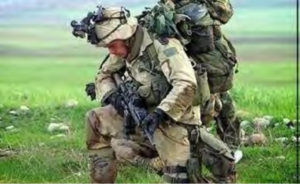
Figure 1. The typical load carried by a Marine is 60-100 pounds (Image courtesy of Northern Warfare Training Center, Fort Wainwright/Released)
Together, water and energy storage can account for approximately 60 pounds of a soldier’s carry weight. This leads to the need for innovative solutions in water purification and energy generation. Alternative energy harvesting technologies, such as solar, have been proposed and tested to supplement future military operations.
Past approaches to power base camps, tactical operations and missions were to carry the anticipated number of spare batteries and use fuel-powered generators or any of the newly developed renewable technologies such as solar cells. While each of these devices has an intended application, they also have cost, size and weight drawbacks. The objective is to increase electrification by providing energy source flexibility; using locally available energy sources; reducing fossil fuel consumption; and expanding the range of the energy use.
Current Approaches
In recent years, development of alternative technologies began to surface to meet the operational energy needs of the military. Ongoing research and development efforts increase the efficiency of current fossil fuel generators using approaches such as waste heat recovery, novel design architecture and alternative fuels. For example, Liquid Piston, Inc. developed a high-efficiency rotary engine for energy generation funded by the Defense Advanced Research Projects Agency [3]. It provides an ultra-compact fossil fuel unit that is a fraction of the weight and size. While fossil fuel generators have proven effective, there has been strong push to move toward renewable energy.
Renewable energy has been a concentrated area of interest for its environmental advantage and ability to provide on-site energy generation, thus reducing the transportation liabilities of transporting fossil fuels. The increasing efficiency of solar cells led to a significant spike in the use of solar as an alternative method of energy harvesting in the field. Solar technology, however, will only meet part of the needs of current and future military operations. Therefore, additional supplemental alternatives are being explored. To provide a point of reference, Table 1 shows various on-site energy harvesting approaches for portable application.
Table 1. Various on-site energy harvesting approaches for portable application.
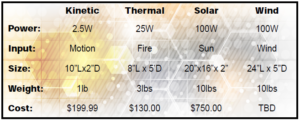
Each technology presented here has a place in the modern energy portfolio and best use scenarios. For example, a kinetic energy generator may be worn while the Marines are on the move, generating power from the motion of walking. This may create enough power to charge small batteries, but at this approach requires full time user input.
A thermal generating unit may be used with a man-made fire. This approach can be utilized practically anywhere and is not directly dependent on weather conditions. For this method, user input is needed to maintain fuel for the fire. This requires partial user input for sourcing fuel (i.e., burnable materials) and maintaining the fire periodically over time.
Solar cells have been the most popular renewable device due to recent developments in performance and cost. Although solar has been shown to work well, it still is limited in field functionality. Solar panels must be positioned in direct sunlight to be effective and require periodic user input to position appropriately. Moreover, solar can only be utilized during the daylight hours in optimal sunlight conditions.
Wind energy can be used in locations with adequate wind such as coastlines, deserts, flatlands, etc. The wind energy can be utilized day or night, given light wind is available, and in many climates and conditions. Once the wind energy device is set up no user intervention is needed to maintain the device.
As these alternative approaches begin to be utilized it must be noted that little development in effective wind turbine technologies has been accomplished. Proposals have been made to implement wind energy into operational energy but little has been seen of a real world solution to effectively supplement the current energy needs, specifically the low energy needs and requirements. Large wind turbines and banks of solar cells are operationally ineffective and vulnerable to attack. Smaller turbines and the same for solar cells that can be tied together have a place in a modern military arsenal.
Arista Power proposed a portable military wind turbine that was rated at 300 watts with a weight of about 15 pounds [4]. Information on this company has since been deleted, leading to the belief that the proposal was never seen to fruition. This may be due to Arista proposing a more common type of wind turbine, but one that has limitations for such applications. The proposed three-blade traditional wind turbine relies on lift to generate power. These devices need to be precisely controlled and primed to operate in the field requiring complex control systems to be effective.
A similar approach has been used by a team of researchers to implement a three-blade wind turbine design into a micro grid, using solar and wind to charge battery storage systems [5]. This project started back in 2009 as Reusing Existing Natural Energy from Wind and Solar, or RENEWS, and the micro grid system weighs roughly 100 pounds. The wind turbine itself is a 300 watt unit weighing approximately 17 pounds. Given that this wind turbine is similar to that of Arista Power, field testing is needed to demonstrate its efficacy.
A New Approach
One technology that can mitigate the energy storage burden is portable wind turbines. A wind turbine system has been developed that is portable, collapsible and provides a rugged, lightweight, power generating device. These devices (see Figure 2) can be easily shipped, transported and carried within an automobile or ruck-sack.
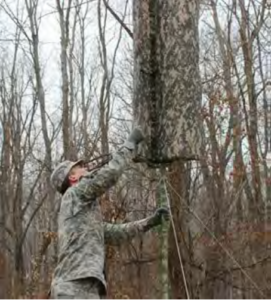
Figure 2. Military wind turbine prototype (Image courtesy of WindPax LLC/Released)
The total wind turbine weight is about 10 pounds, which allows for the displacement of a portion of the required battery storage while reducing the total carry weight. In the event a mission is extended, the battery systems can be recharged rather than relying on the shipment of fully charged batteries. The wind turbines are scalable and can come in a variety of sizes from individual to squad-sized units that can provide the ability to charge battery storage systems. The wind turbines can also provide power for running electronic devices such as laptops, smart phones, LED lighting and other common electronic devices.
These wind turbines can be utilized 24/7 in many areas with light wind as low as three meters per second. Typically areas along the coast, flat lands and desert locations have abundant wind potential provide ideal conditions for the use of wind turbines.
Design
Researchers chose a Savonius Rotor design due its self-starting and self-sustaining capabilities. This is a simple design that also allows it to start and run at low wind speeds, so no monitoring or priming of the device is necessary. In addition to the novelty of it being collapsible, the wind turbine employs advanced features to increase its wind energy capture efficiency.
A modified Savonius Rotor was designed to achieve an improved power coefficient and field performance. Figure 3 shows power coefficients of various common wind turbine designs. It may be noted that the horizontal axis three bladed wind turbine has the highest power coefficient, which is why it is more commonly used and has been attempted to be used in portable applications. Although it presents better performance, it presents limitations for portable use.

Figure 3. Power coefficients of traditional wind turbine devices. [4] (Released)
Historical test data shows that drag style turbines such as the Savonius Rotor operate with a tip speed ratio below or equal to 1, which will provide a self-starting wind turbine [6]. The tip speed ratio can be defined as:
![]()
where ω is the rotational velocity of the turbine, R is the radius of the rotor and V is the wind velocity.
The maximum power that the rotor can extract from the wind energy can be defined as:
![]()
where ρ represents the density of air, Cp represents the power coefficient, S represents the swept area and V represents the velocity of the wind.
By adjusting the aspect ratio, number of vanes, vane profile, shape factor, vane separation and vane overlap; an improved Cp was achieved. These modifications to a Savonius Rotor are illustrated in Figure 4.
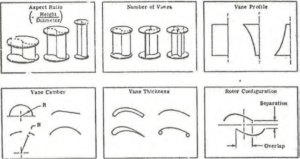
Figure 4. Diagram of Savonius Rotor modifications. (Released)
Published test data suggests an aspect ratio of 1.5- 2 for peak turbine performance [7]. The aspect ratio is defined as:
![]()
A preferred aspect ratio of 2 was chosen to best meet the collapsibility parameters of the design. Since simplicity is crucial for this design the preferred number of vanes was determined to be three. This also helps to make a smoother running turbine reducing the pulsing rotation of two blade arrangements.
The separation and the overlap are defined in Figure 5 using a two-blade Savonius Rotor example.
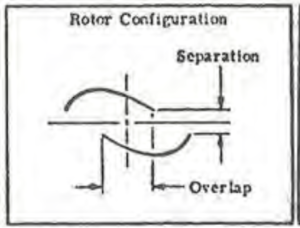
Figure 5. Diagram of Savonius rotor separation and overlap. (Released)
It has been shown that the best results for power and torque are obtained through an overlap or e/d (e = separation and d = radius) ratio of .24 with no overlap when used in a three-vane arrangement [7]. Figure 6 shows that the e/d ratio is the ratio of the overlap to the diameter of one vane. Table 2 summarizes the design parameters of the final configuration, which is demonstrated in Figure 6. Figure 7 shows a CAD-generated model.

Figure 6. Final design geometry. (Image courtesy of WindPax LLC/Released)
Table 2. Design parameters.

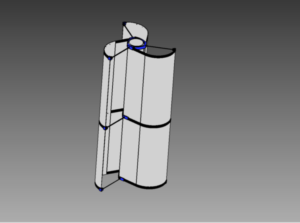
Figure 7. CAD-generated model. (Image courtesy of WindPax LLC/Released)
Three preferred power standards were set, a typical USB connection 5V @ 1A, standard 12 V port @ 4A and the Ultralife BB-2590 lithium ion battery charging requirements which are 16.4 V @ 3A (49.2 watts) for a 6-hour charging cycle. To achieve these power levels, an analytical approach was used to size the wind turbines based on the previous design parameters to maximize performance for the intended application and power requirement.
Given the previous power equation for a Savonius Rotor, the S denotes the swept area of the turbine. This area is the total area seen by the incoming wind. The swept area can be defined as:
![]()
where h is the height of the blade and D is the diameter of the total turbine. The second part considers overlap of the blades where h remains the height of the blade, R denotes the radius of the turbine and e represents the overlap of the blades.
The power production required by the wind turbine was established to be 100 watts at rated wind speeds of 12 meters per second. This power requirement resulted in a wind turbine with a rotor size of 24 inch diameter by 48 inch height when erected. This rotor, as seen in Figure 3, is supported by a 72 inch mounting support that is tethered to the ground. This turbine size will provide adequate power at average wind speeds (6 to 9 meters per second) for charging a variety of devices, some simultaneously.
The turbine was designed using CAD software to allow the prototypes to be constructed using 3D printed parts and commercially available materials and components.
The prototype was constructed using a polycarbonate center shaft, flexible polycarbonate/fabric vanes and 3D printed plastic components. The generator is mounted within the center shaft and connects the rotating turbine with the ground support. The collapsibility of the turbine is achieved by dismantling the vanes from the center shaft hubs, telescoping the center shaft to half its total length and wrapping the flexible vanes around the center for packaging. The developed wind turbine is shown in Figure 8 during initial wind tunnel testing.
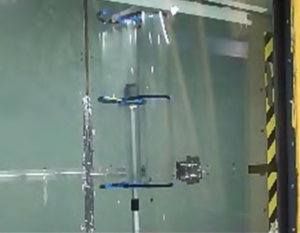
Figure 8. Wind tunnel testing of initial prototype. (Image courtesy of WindPax LLC/Released)
Benefits of a Portable Wind Energy Device
The wind turbine system is designed to meet universal power standards, have a modular design architecture and be scalable for energy needs. This unique design provides the ability to combine multiple units, both wind turbines and other power generation devices, to meet the desired power requirements. Wind energy can be complementary to solar and other energy harvesting devices by providing the ability to capture renewable energy on-site in diverse climates such as rain, snow or overcast conditions.
Portable wind turbines are proposed to displace a portion of the stored batteries, and carried with the soldiers (see Figure 9). For example, military operators can store energy for two days and have the ability to recharge day or night as needed. This approach helps to reduce the need for logistical supply of fossil energy, environmental liabilities and allows the individual to harvest and regenerate the energy in the field. The important aspect of this approach is the increased survivability and sustainability of the combatant during extended missions with the possibility of providing lifesaving capabilities if stranded.

Figure 9. WindPax military prototype collapsed for transportation. (Image courtesy of WindPax LLC/Released)
Conclusion
A portable wind turbine has a significant opportunity to supplement energy storage and provide a renewable energy generation method to recharge battery storage systems. This will bring the tactical units closer to the goal of energy independence, sustainability and survivability in the field. Wind energy diversifies the operational energy portfolio with a renewable on-site method to support and complement other sources of energy. Prototypes for field testing have been built to demonstrate the potential of this technology. Military specification versions are proposed to be developed in collaboration with organizations supporting these initiatives. It is expected that the portable wind energy technology will have a significant impact on future energy independence for both military and civilian populations. ■
References
1. Robinson, P. (2015, June 10). What do Soldiers Carry and What does it Weigh? Retrieved from https://protonex.com/blog/what-do-soldiers-carry-and-whats-its-weight/(accessed July 5, 2016).
2. Murphy, P. (2011, March 12). Weight Of War: Soldiers’ Heavy Gear Packs On Pain. Retrieved from http://www.npr. org/2011/04/10/134421473/weight-of-war-soldiers-heavy-gear-packs-on-pain (accessed July 5, 2016).
3. Business Wire. (2015, April 23). Liquid-Piston Signs $1M Agreement with DARPA to Develop Fuel-Efficient, Lightweight, Heavy-Fueled, Rotary Combustion Engine Technologies for the U.S. Military. Retrieved from http://www.businesswire.com/ news/home/20150423005821/en/Liquid-Piston-Signs-1M-Agreement-DARPA-Develop-Fuel-Efficient (accessed August 12, 2016).
4. PRNewswire. (2011, October 6). Arista Power Introduces Line of Man-Portable Micro Wind Turbines to Support Charging of Battery Systems at Remote Locations for Military and Other Applications. Retrieved from http://www.prnewswire.com/news-releases/arista-power-introduces-line-of-man-portable-micro-wind-turbines-to-support-charging-of-battery-systems-at-remote-locations-for-military-and-other-applications-131245749. html (accessed August 12, 2016).
5. Lafontaine, D. (2012, May 10). Army Scientists develop deployable renewable-energy solutions. Retrieved from https://www.army. mil/article/79471/ (accessed July 5, 2016).
6. Sathyajith, M. (2006). Wind Energy: Fundamentals, Resource Analysis and Economics. Springer. Retrieved from https://www.dolcera. com/wiki/images/Wind_power_energy. pdf (accessed July 5, 2016).
7. Menet, J.-L., & Bourabaa, N. (n.d.). Increase in the savonius rotors efficiency via a parametric investigation. France : Universite de Valenciennes. Retrieved from http://educypedia.karadimov.info/library/23_1400_jeanlucmenet_01.pdf (accessed July 5, 2016).
Background
• Cetin, N., Yurdusey, M. A., & Ozdemir, A. (2005). Assessment of optimum tip speed ratio of wind turbines. Mathematical and Computational Applications. Retrieved from http://www.mdpi.com:8080/2297-8747/10/1/147/pdf (accessed July 5, 2016).
• Chambers, J. R., Lowery, A. D., & Smith, J. E. (2015). Collapsible Wind Powered Energy Generation and Storage Device. ASME 2015 International Mechanical Engineering Congress & Exposition.
• Saha, U., & Rajkumar, J. M. (2006). On the performance analysis of Savonius rotor with twisted blades. Renewable Energy, 1776-1788. doi: 10.1016/j.renene.2005.08.030.
Justin R. Chambers is a Ph.D. candidate in mechanical engineering with a Bachelor of Science in mechanical engineering from West Virginia University. After graduating Magna Cum Laude in 2012, Chambers continued his work as a NanoSAFE Graduate Fellow and is currently conducting research as a West Virginia University Innovation Corporation researcher. Chambers looks forward to working on new technologies, start-up ventures and enterprise development.
James E. Smith received his B.S. and M.S. degrees in aerospace engineering and Ph.D. in mechanical engineering from West Virginia University in 1972, 1974 and 1984, respectively. He is currently the director of the Center for Industrial Research Applications at WVU, where he is also a professor in the Mechanical and Aerospace Engineering Department. He has taught at the University since 1976, before which he was a research engineer for the Department of Energy. He was the 2009 SAE International president and chairman of the board of directors. During his 40-plus-year engineering career, he has been the principal and/or co-principal investigator for various projects funded by federal agencies, TACOM Department of Defense, HEW, DOT, US Navy, DARPA and the Department of Energy. The work in these projects has resulted in the publication of 172 conference papers and 63 journal or bound transaction papers. This work has resulted in the granting of 35 United States Patents and numerous foreign patents on mechanical, medical, and energy-related devices.


